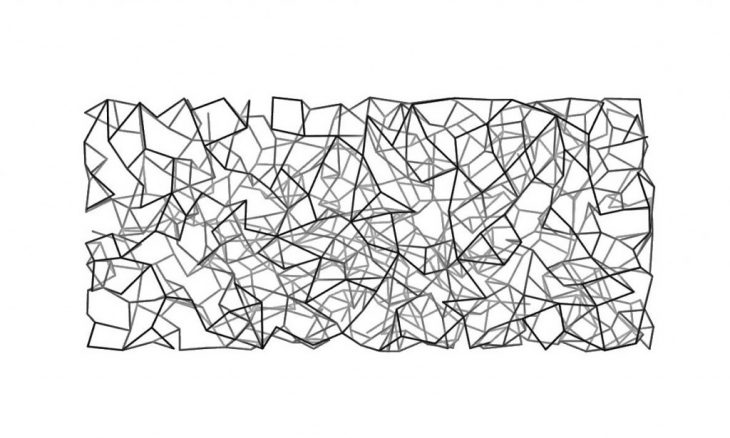Brief:
Recursion in mathematics is stated as a function that is defined by being applied within itself.
In other words, the initial conditions are repeated in itself until a satisfactory outcome has
been achieved. The power of recursion evidently lies in the possibility of defining an infinite set of
objects by a finite statement.
In architecture, the role of recursivity has been translated often into a merely aesthetical
exploration rather than for solving complex problems with simple rules. This assignment
wants to investigate applications and implications of looping and recursive strategies to
reframe the generation of architectural spaces.
As a case study students will have to intervene a part of the Mies van der Rohe pavilion and
propose an architectural installation applying recursive systems which resembles how would
nature proliferate in a contained environment (take over the space).
Recursive Growth
The Forest
Inspired by nature, especially by trees and roots, the project proliferates and takes over the space in the Mies van der Rohe pavilion, growing into an architectural installation. This proposal can serve both as a structure and as a instalation. Two installations are proposed one over the water plan and another one inside the pavilion.
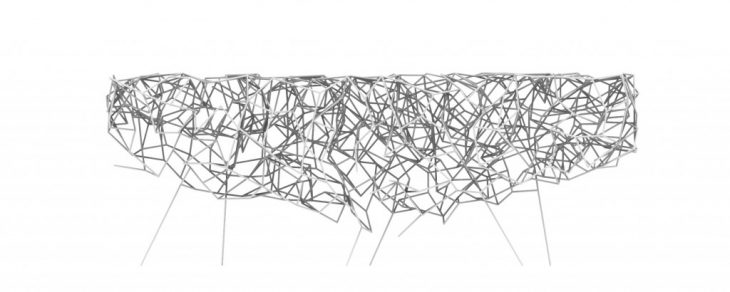
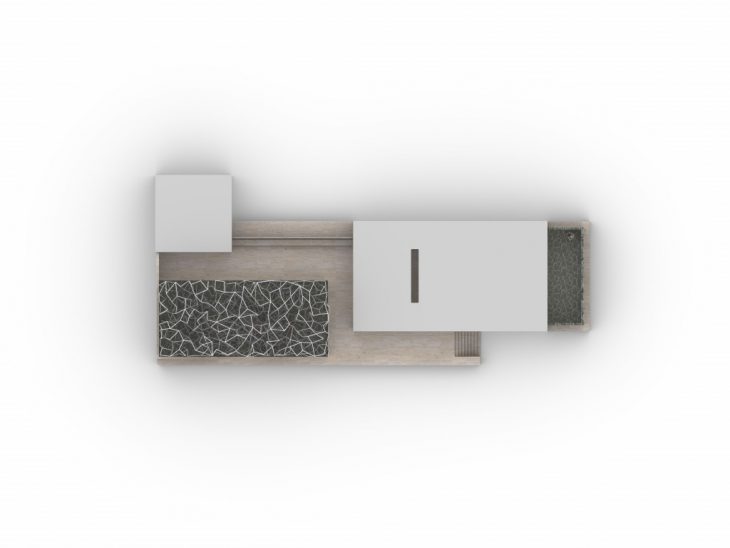
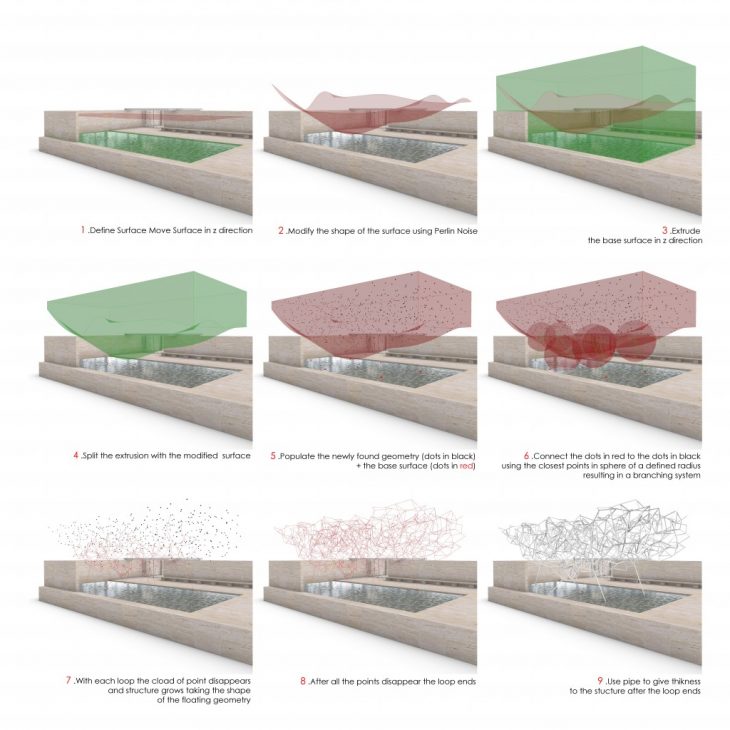
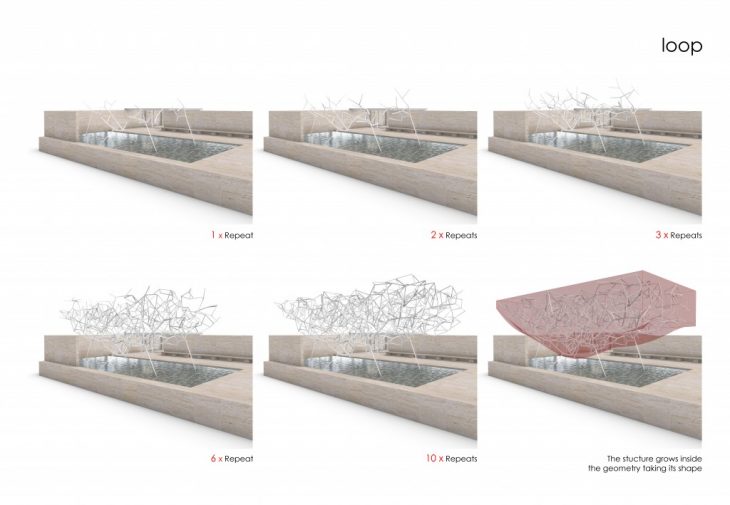
Iterations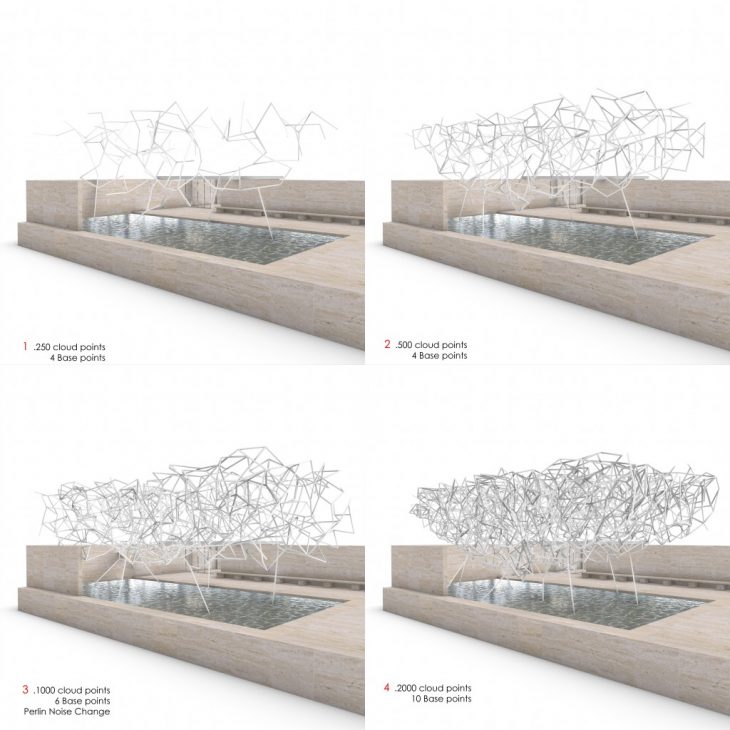
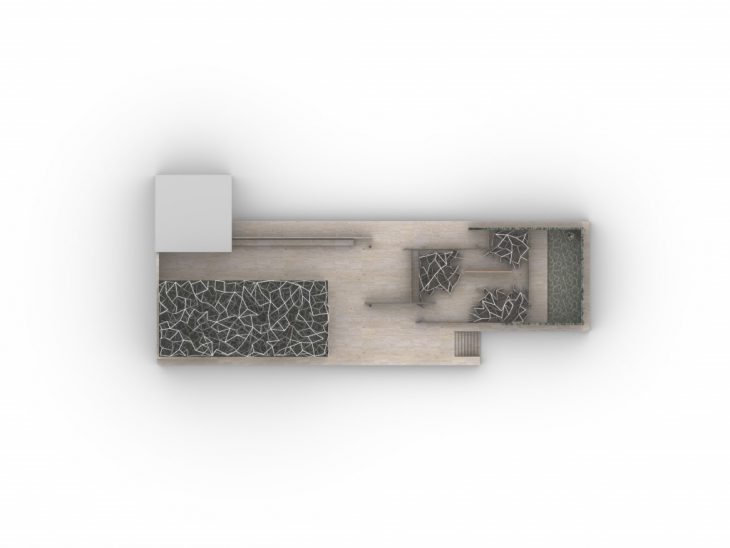 Iteration/inside the pavilion
Iteration/inside the pavilion
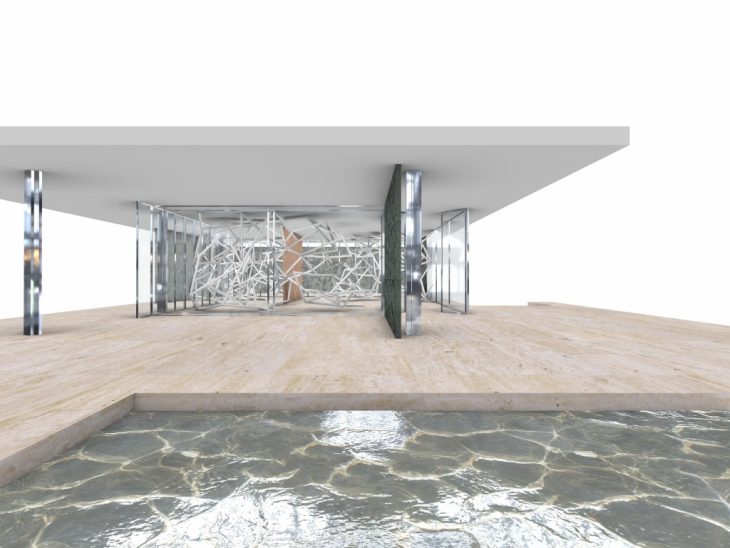
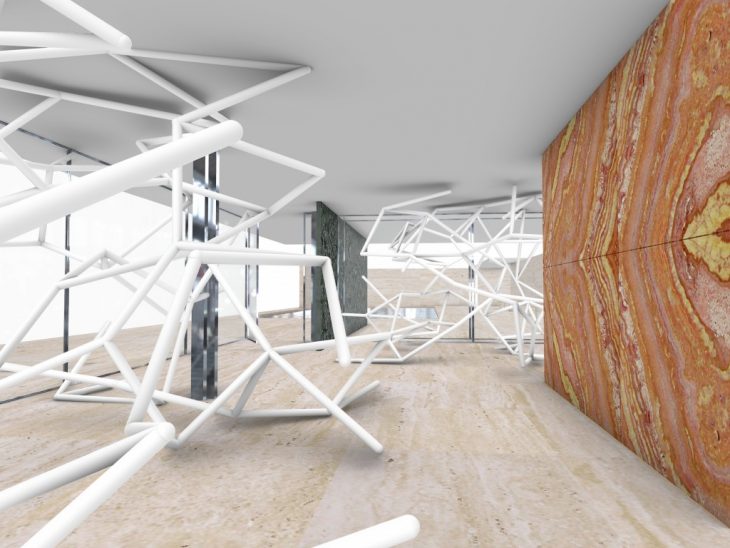
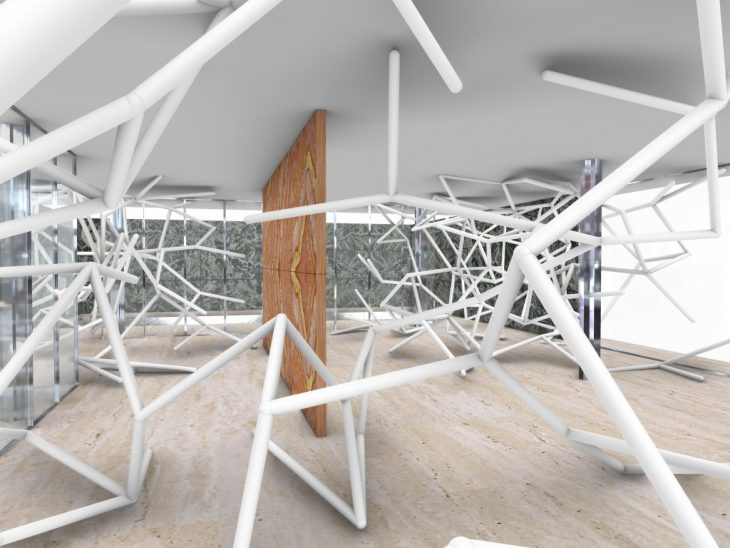
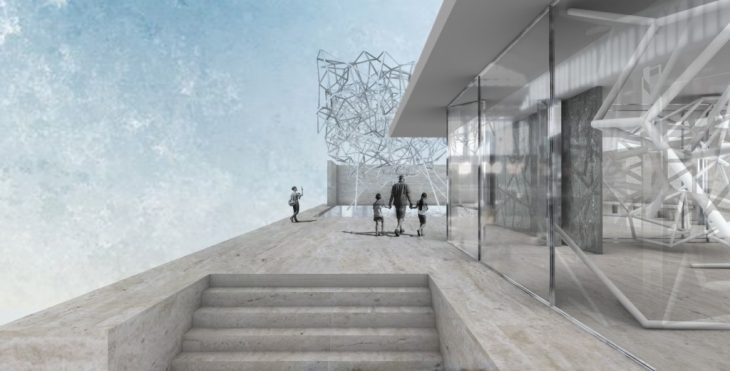
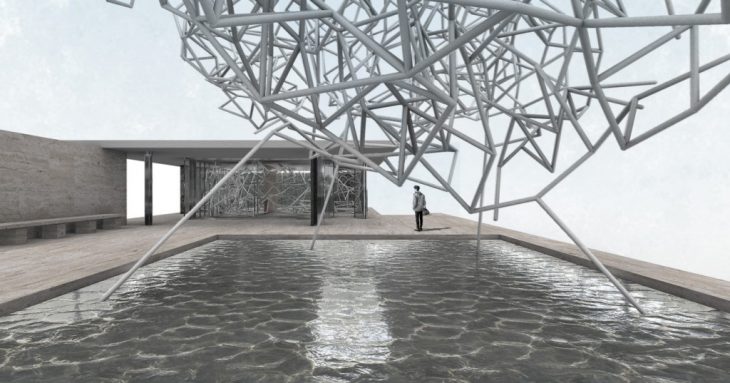
Recursive Growth is a project of IaaC, Institute for Advanced Architecture of Catalonia developed at Master in Advanced Architecture, in 2019 by:
Student: Nicolas Saade
Faculty: Rodrigo Aguirre
Assistant: Daniil Koshelyuk and Nikoleta Mougkasi
